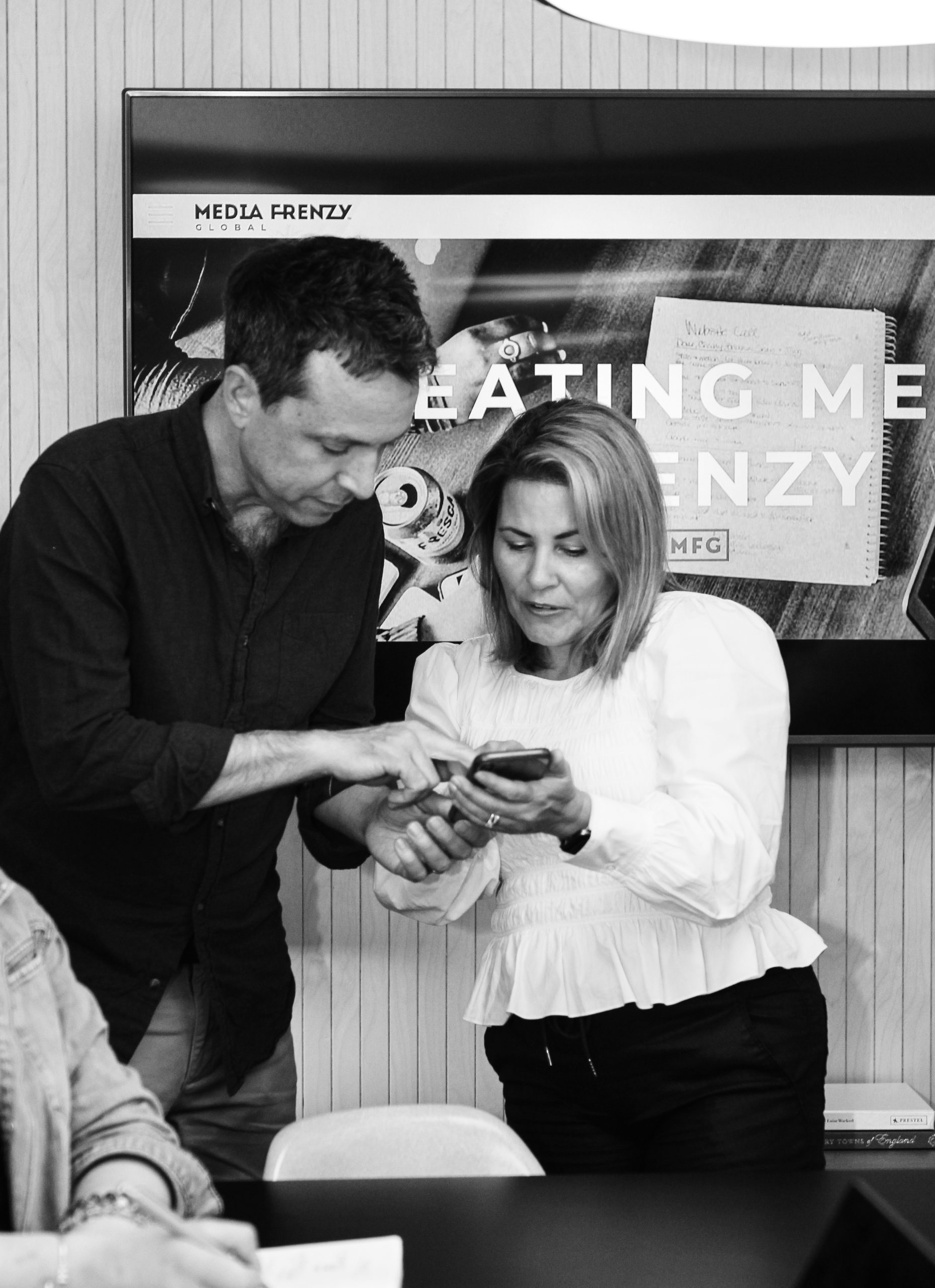
Why do B2B brands have such a hard time creating contagious content — meaning content that people love and interact with? The answer may be simpler than you think.
Over many years of experience, we’ve found that marketers tend to get off track right from the beginning by making the assumption that B2B brands need to lead with the benefits or features of their product. That’s not the case — there may be a sense that you need to compete head-to-head on features, but it doesn’t have to be that way.
Businesses are people too, and your buyer is still a human who is considering (and hopefully choosing) your product. If you can get past the urge to list your benefits, you can create more meaningful communications and build brand loyalty as a result (see Slack and Google Workspace).
So if you shouldn’t just highlight product features and benefits: what should you do? Create contagious content. It’s the first pillar of our Frenzy framework: capturing the attention and desire of your customers and adding a healthy dose of urgency. That urgency doesn’t have to be of the “I-need-this-product-now” sort, either — it could be a “I-need-to-share-this-now” reaction to your content.
Your content is what hooks potential customers before they hear about your product’s benefits, so it should be interesting enough to make them pause and take a look. In customers’ minds, if a piece of content is boring, then by proxy so is the company that curated that content.
Contagious content, on the other hand, will do the work for you. Create great content, and it will circulate and create conversation naturally. That sort of content looks different for every business, but it usually has one thing in common: it doesn’t start from your offerings or value proposition. It starts from your customer’s pain points. What’s important to their life? What problems are they encountering, and how can you make those problems better?
The first step, then, is thinking about what your customers want to see, rather than what you want to show them. In some lucky scenarios, what you want to show them will directly overlap with what they want to see. Usually, however, that’s not the case — and this is where we encourage you to trust the process. Resist the urge to “throw the book” at customers in the hopes that they’ll pick out the one piece of information they need (spoiler alert: they won’t). Instead, try to curate your content according to these principles:
Emotional triggers create some of the most memorable campaigns, but many B2B brands are too afraid of missteps to try this approach. We think that the most forgiving foray into the world of emotional appeals in B2B is humor: who doesn’t want to enjoy some humor at some point throughout the workday? Cisco’s Cyber Threat Response comic is one of our favorite examples. It makes the niche-yet-necessary topic of cybersecurity something that anyone in the office will want to read — and gives industry experts a good laugh as well.
People want forms of social currency: they like being “in-the-know” and sharing new or interesting information with others. Lean into that by giving them something to talk about. In a B2B context, this could easily come from any proprietary data you may have, or even from third-party studies. Have some interesting data about what percentage of employees prefer leaving the office for lunch, or how many are actually working on summer Friday afternoons? Then you have the beginning of an interesting content strategy that gives people something to talk about.
Interested in learning more about how to create contagious content? Check out Frenzy’s recent bookclub read: Jonah Berger’s NYT Bestseller Contagious: Why Things Catch On.